An advertisement from The Atlantic Monthly, 1884:
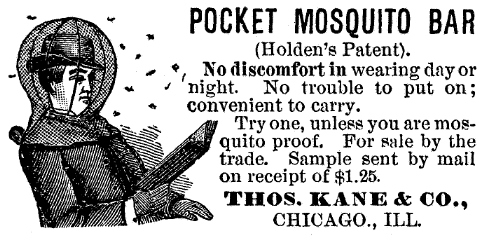
The gloves, presumably, are not included.
An advertisement from The Atlantic Monthly, 1884:

The gloves, presumably, are not included.
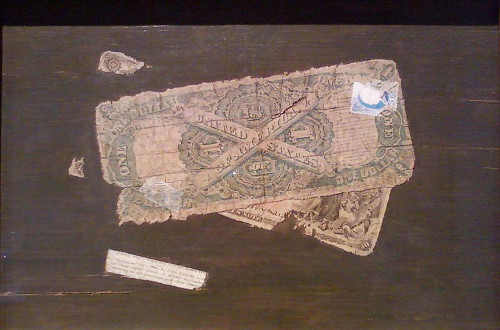
John Haberle’s 1889 trompe l’oeil masterpiece U.S.A. was such a faithful representation of a U.S. greenback that one could read the ironic government warning on the bill:
“Counterfeiting, or altering this note, or passing any counterfeit or alteration of it, or having in possession any false or counterfeit plate or impression of it, or any paper made in imitation of the paper on which it is printed, is punishable by $5000 fine or 15 years at hard labor or both.”
More than one viewer took it for an actual bill. When the painting was installed at the Art Institute of Chicago, the art critic of The Chicago Inter-Ocean objected: “There is a fraud hanging on the Institute walls. … It is that alleged still life by Haberle [in which] a $1 bill and the fragments of a $10 note have been pasted on canvas. … That the management of the Art Institute should hang this kind of ‘art’ even though it were genuine, is to be regretted, but to lend itself to such a fraud … is shameful.”
Haberle immediately took a train to Chicago and stood by while experts scrutinized the work through lenses, rubbed off paint, and declared it a genuine work of imitative art. The critic issued a public apology, acknowledging that others, including “Eastman Johnson, the dean of American figure and genre painters”, had also been taken in by Haberle’s works.
A lady wishes to borrow One Hundred Pounds. The Security, though personal, may probably be very agreeable to a single Gentleman of spirit. Every particular will be communicated with Candour and Sincerity, where confidence is so far reposed as to give the real Name and Address of the party willing to oblige the Advertiser. Gentlemen of real Fortune and liberal Sentiments, and those only, are requested to address a line to Y. N. at Mr Dyke’s, Cross Street, Long-Acre.
— Morning Post, Dec. 15, 1775
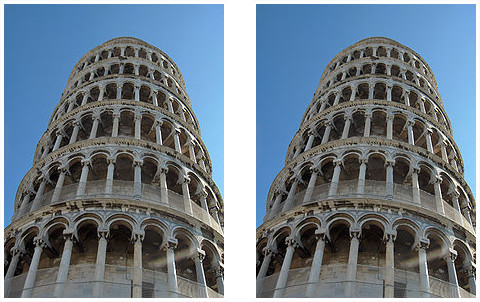
These images are identical, yet the tower on the right appears to lean more. Why?
Frederick Kingdom, Ali Yoonessi, and Elena Gheorghiu of McGill University discovered this effect in 2007. Normally parallel towers viewed from below appear to converge with distance; because that doesn’t happen here, the brain infers that the towers are diverging.

Astrologer William Lilly managed to torpedo his own reputation. Nettled at rumors abroad in London, he published this advertisement in the Perfect Diurnal of April 9, 1655:
Whereas there are several flying reports, and many false and scandalous speeches in the mouth of many people in this City, tending unto this effect, viz., that I, William Lilly, should predict or say there would be a great fire in or near the Old Exchange, and another in St. John’s Street, and another in the Strand, near Temple Bar, and in several other parts of the City. These are to certify the whole City that I protest before Almighty God that I never wrote any such thing, I never spoke any such word, or ever thought of any such thing, of any or all of these particular places or streets, or any other parts. These untruths are forged by ungodly men and women to disturb the quiet people of the City, to amaze the nation, and to cast aspersions and scandals on me.
He should have held his tongue — the Great Fire of London broke out on Sept. 2, 1666, and consumed more than 13,000 houses, fulfilling the prophecy that Lilly had disclaimed.
“He must have misread the stars,” wrote Walter George Bell in Fleet Street in Seven Centuries. “Not to have forecasted the fire would not have mattered; but to have prophesied that it would not take place! The fool! the abject, intolerable fool!”
“The opinions that are held with passion are always those for which no good ground exists; indeed the passion is the measure of the holder’s lack of rational conviction.” — Bertrand Russell
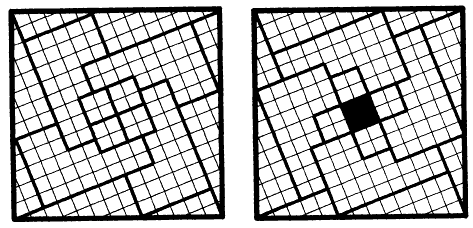
Martin Gardner called this the proudest puzzle of his own devising. When the pieces on the left are rearranged as on the right, a hole appears in the center of the square. How is this possible?
“I haven’t the foggiest notion of how to succeed in inventing a good puzzle,” he told the College Mathematics Journal. “I don’t think psychologists understand much either about how mathematical discoveries are made. … The creative act is still a mystery.”
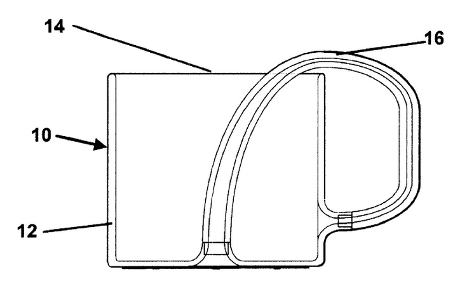
Erl E. Kepner patented a bewildering object in 2002 — a one-sided coffee mug:
To help us see the unique properties of the beverage vessel, let’s pretend that the vessel is made of astonishingly thin material. This is a ‘thought experiment’, not a real experiment, where you actually physically do anything. Note that the only edge on the vessel is the rim that your lips would touch if you drank coffee from it. The rim of the container would be a very sharp edge while the areas where the container and the hollow handle come together would be smooth curved shapes. Now pretend that you have a very tiny little black ball shaped magnet located on the surface of the vessel somewhere and another little tiny white ball magnet located on the opposite side of the vessel material. If one were to (mentally) move either the black or white ball magnet, it would cause the white or black ball magnet to move also. One could move the black or white ball magnets, one at a time, along the vessel surface so that white ball magnet ended up where the black ball magnet was initially located and the black ball magnet was where the white ball magnet originally was. This can be accomplished without having either of the magnets pass over the vessel rim, which is the only edge of the vessel. Other than the Klein Bottle, no other hollow shape has this property. Another way to envision or demonstrate the unique properties of this shape is to point out the fact that a little bug can crawl from any point on the surface of the vessel to any other point on the surface of the vessel without crossing over an edge. Bugs cannot do this on a normal coffee cup or any other three-dimensional shape that we use in our daily lives.
“The future marketing of the beverage container of this invention will use these sorts of interesting points to stimulate interest among technically well educated people and everyday people with an innate curiosity and appreciation for the wonder and beauty of mathematics and nature.”
See Carry-All and the Klein bottle recycling center.
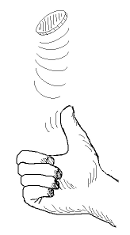
Whenever you’re called on to make up your mind
And you’re hampered by not having any,
The best way to solve the dilemma, you’ll find,
Is simply by flipping a penny.
No, not so that chance shall decide the affair
While you’re passively standing there moping;
But the moment the penny is up in the air
You suddenly know what you’re hoping.
— Piet Hein
Any person in want of a DEAD PIG may find one, that will probably answer his purpose, in the middle of Broadway, between Broome and Spring Streets. Applicants need not be in any great haste, as it is expected that he will lie there several days; and if the warm weather should last, and the carriages will let him alone, he will grow — bigger and bigger.
— New York Daily Advertiser, 1822